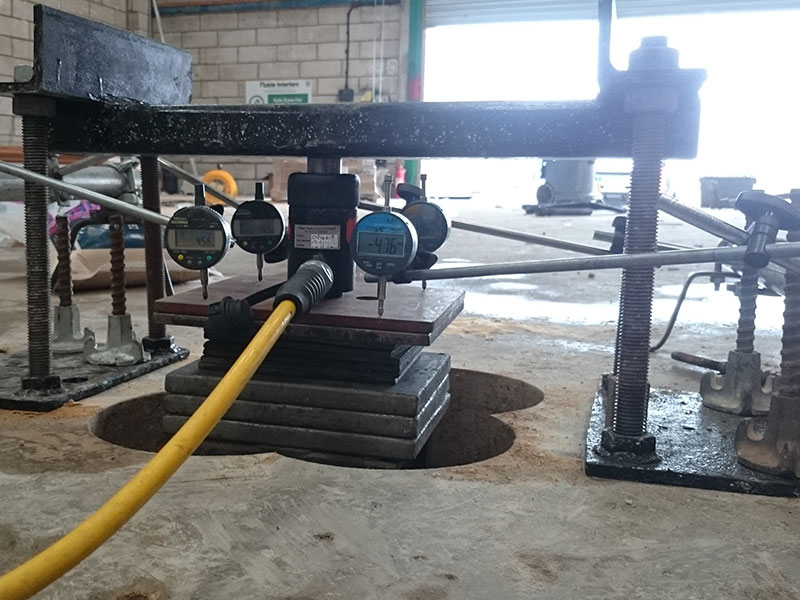What is Plate Load Test?
Plate load test is a field test, which is performed to determine the ultimate bearing capacity of soil and the probable settlement under a given load. This test is very popular for selection and design of shallow foundation.
For performing this test, the plate is placed at the desired depth, then the load is applied gradually and the settlement for each increment of load is recorded. At one point a settlement occurs at a rapid rate, the total load up to that point is calculated and divided by the area of the plate to determine the ultimate bearing capacity of soil at that depth. The ultimate bearing capacity is then divided by a safety factor (typically 2.5~3) to determine the safe bearing capacity.
Plate Load Test Procedure
The necessary steps to perform plate load test is written below-
- Excavate test pit up to the desired depth. The pit size should be at least 5 times the size of the test plate (Bp).
- At the center of the pit, a small hole or depression is created. Size of the hole is same as the size of the steel plate. The bottom level of the hole should correspond to the level of actual foundation. The depth of the hole is created such that the ratio of the depth to width of the hole is equal to the ratio of the actual depth to actual width of the foundation.
- A mild steel plate is used as load bearing plate whose thickness should be at least 25 mm thickness and size may vary from 300 mm to 750 mm. The plate can be square or circular. Generally, a square plate is used for square footing and a circular plate is used for circular footing.
- A column is placed at the center of the plate. The load is transferred to the plate through the centrally placed column.
- The load can be transferred to the column either by gravity loading method or by truss method.
Figure: Test Setup for Plate Load Test - For gravity loading method a platform is constructed over the column and load is applied to the platform by means of sandbags or any other dead loads. The hydraulic jack is placed in between column and loading platform for the application of gradual loading. This type of loading is called reaction loading.
- At least two dial gauges should be placed at diagonal corners of the plate to record the settlement. The gauges are placed on a platform so that it does not settle with the plate.
- Apply seating load of .7 T/m2 and release before the actual loading starts.
- The initial readings are noted.
- The load is then applied through hydraulic jack and increased gradually. The increment is generally one-fifth of the expected safe bearing capacity or one-tenth of the ultimate bearing capacity or any other smaller value. The applied load is noted from pressure gauge.
- The settlement is observed for each increment and from dial gauge. After increasing the load-settlement should be observed after 1, 4, 10, 20, 40 and 60 minutes and then at hourly intervals until the rate of settlement is less than .02 mm per hour. The readings are noted in tabular form.
- After completing of the collection of data for a particular loading, the next load increment is applied and readings are noted under new load. This increment and data collection is repeated until the maximum load is applied. The maximum load is generally 1.5 times the expected ultimate load or 3 times of the expected allowable bearing pressure.






